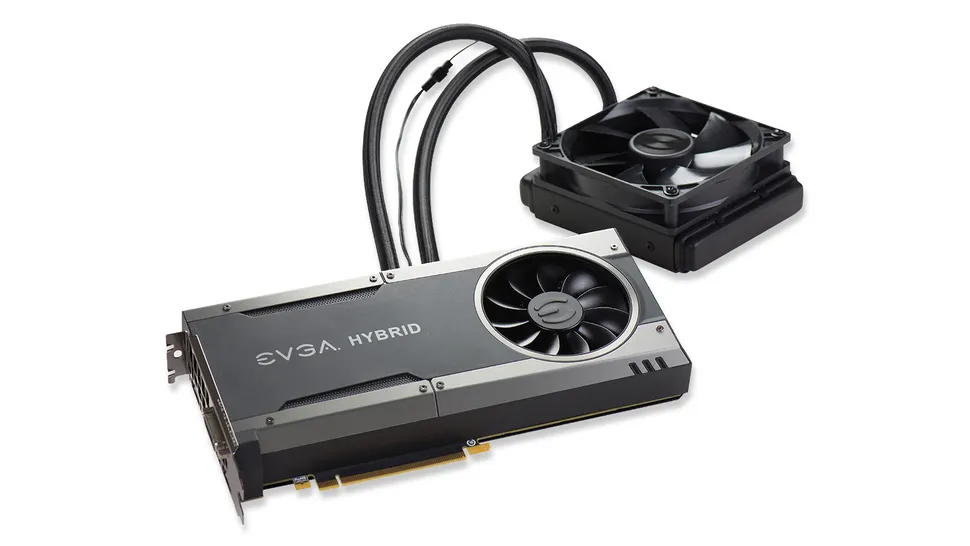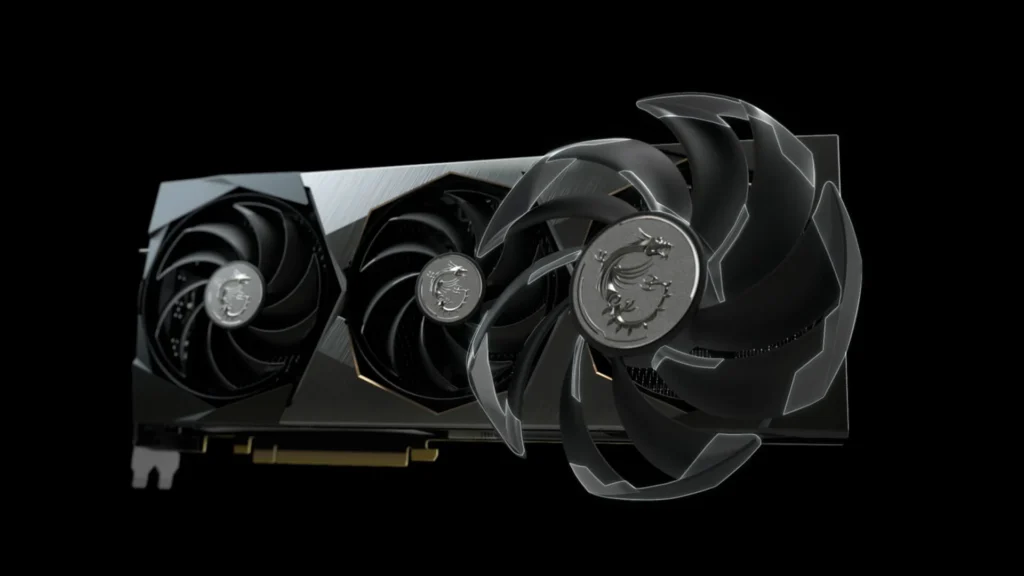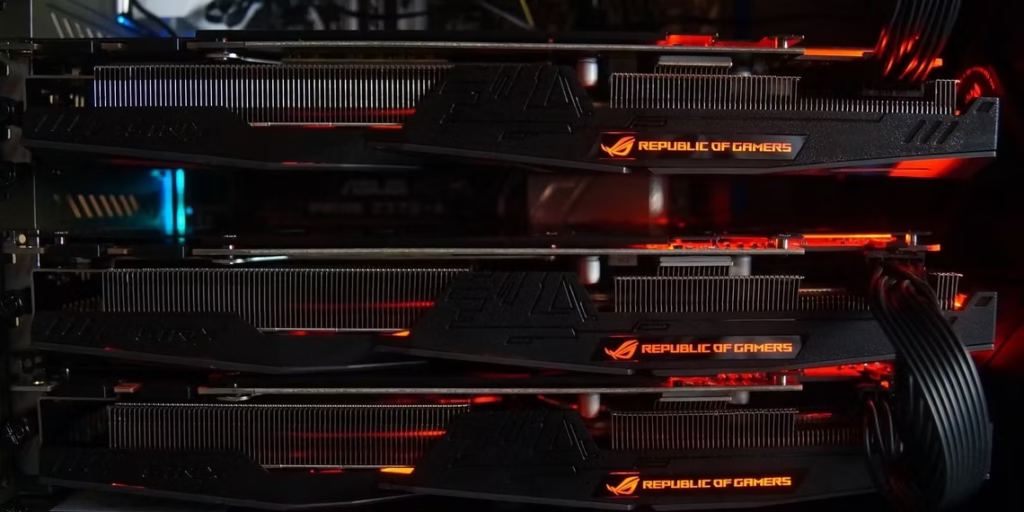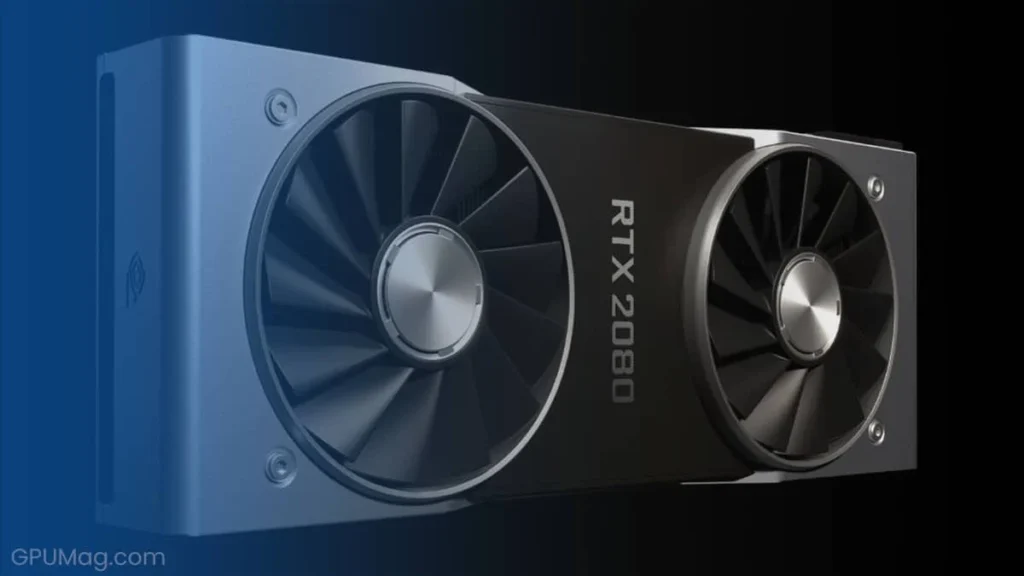I noticed only one fan on my GPU spinning during a gaming session. My PC started to lag, and I checked the temperatures. They were soaring! Turns out, dust had clogged the other fan. A quick cleaning fixed the issue, and my games ran smoothly again.
If only one fan on your GPU is running, it could be due to low temperatures, custom fan settings, or a cooling design where all fans don’t activate together. However, it might also signal dust buildup, a hardware issue, or outdated drivers. Check temperatures and clean or troubleshoot as needed.
In this article, we’ll discuss about “only one fan on my GPU is running, why only one fan on my GPU is running, is it normal for one GPU fan to not spin and also how to troubleshoot “only one fan on my GPU is running”.
Understanding GPU Cooling Systems:
GPUs generate a lot of heat when they work hard. To prevent overheating and damage, they have cooling systems. These usually include a heatsink (a metal piece that absorbs heat) and fans that blow air over the heatsink, cooling it down. This keeps the GPU running smoothly and prevents performance issues caused by excessive heat.

Why Only One Fan on My GPU Is Running?
1. Low Temperature (Zero-RPM Mode):
Many modern GPUs have a “zero-RPM” mode, where the fans remain completely still at idle or under light loads. This reduces noise and saves energy. If your GPU isn’t under heavy stress, only one fan might spin, or even none at all.
2. Asymmetric Cooling Design:
Some GPUs have an asymmetrical cooling design, meaning the heat distribution isn’t perfectly even. In these cases, one fan might be positioned to handle the majority of the cooling, while the other only activates under heavy loads or high temperatures.
3. Custom Fan Curve Settings:
You can often customize fan curves in GPU software (like MSI Afterburner or EVGA Precision X1). If you’ve set a custom curve that prioritizes low noise, it might only activate one fan at lower temperatures.
Also Read: Runtimeerror: No GPU Found. A GPU Is Needed For Quantization. – Here’s How to Fix It!
4. Dust and Dirt Build-Up:
Dust can accumulate on the GPU’s fans and heatsink, hindering airflow. If one fan is obstructed by dust, it might not be able to spin properly, forcing the other fan to work harder.
5. Hardware Issues:
A faulty fan motor, damaged fan blades, or a loose fan connection can prevent one fan from spinning. In some cases, the fan itself might be defective.
6. Driver or BIOS Problems:
Outdated or corrupted GPU drivers or BIOS settings can sometimes interfere with proper fan control, leading to unexpected behavior like only one fan spinning.
Is It Normal For One GPU Fan To Not Spin?
It’s not always a cause for concern if only one fan on your GPU is spinning. Modern GPUs often have intelligent fan control that only activates fans when needed to maintain optimal temperatures. If your GPU isn’t under heavy load, only one fan might be sufficient for cooling. However, it’s always a good idea to monitor your GPU’s temperature with software like MSI Afterburner to ensure it’s not overheating.

How To Troubleshoot “Only One Fan On My GPU Is Running”?
1. Monitor GPU Temperatures:
- Use software like MSI Afterburner, GPU-Z, or EVGA Precision X1 to monitor your GPU’s temperature.
- If the temperature remains within safe limits (usually below 80-90 degrees Celsius), the single-fan operation might be normal.
2. Stress Test Your GPU:
- Run a demanding game or a GPU stress test (like FurMark or 3DMark) to see if both fans activate under heavy load.
- If only one fan spins during intense usage, it could indicate a problem.
3. Inspect for Dust or Physical Obstruction:
- Open your computer case and carefully inspect the GPU for dust buildup on the fans and heatsink.
- Use compressed air to gently clean the fans and heatsink.
- Check for any physical obstructions that might be preventing one fan from spinning.
4. Check Fan Connections:
- Make sure the fan cables are securely connected to the GPU and the motherboard.
- Gently reseat the fan connectors.
5. Reset or Adjust Fan Curves:
- If you’ve customized fan curves in your GPU software, try resetting them to default or adjusting them to ensure both fans spin at appropriate speeds.
6. Update Drivers and BIOS:
- Update your GPU drivers to the latest version from the manufacturer’s website (NVIDIA or AMD).
- If necessary, update your motherboard BIOS to the latest version.
7. Test the Fan Manually:
- If you suspect a faulty fan, try gently spinning it with your finger.
- If it feels stiff or doesn’t spin easily, it might be the problem.
8. Contact Manufacturer Support:
- If you’ve tried all these steps and the issue persists, contact your GPU manufacturer’s support for further assistance. They may be able to provide more specific troubleshooting advice or recommend repair options.
Also Read: Does AMD GPU Work With Intel CPU – A Comprehensive Guide 2024!
Preventing GPU Fan Issues:
To avoid future problems with your GPU fans, follow these tips:
- Regular Cleaning: Clean your GPU and case fans regularly to prevent dust buildup.
- Maintain Proper Ventilation: Ensure your computer case has good airflow to keep the GPU cool.
- Monitor Temperatures: Keep an eye on GPU temperatures, especially during heavy workloads.
- Avoid Overclocking Without Proper Cooling: Overclocking can generate additional heat, stressing the fans. Ensure your GPU cooling system can handle the extra heat before overclocking.
When Should I Worry If Only One GPU Fan Is Spinning?
While it’s often normal for only one fan to run under certain conditions, there are times when this behavior could signal a problem:
- High Temperatures: If your GPU temperature rises above 60°C during gaming or other demanding tasks, and only one fan is running, it could indicate an issue.
- Consistent Inactivity: If one fan never spins, even under high load, it might be faulty.
- Abnormal Noise: Unusual noise from the running fan could indicate that it’s compensating for the non-spinning fan, which might lead to wear and tear over time.
Why Is One Of My GPU Fans Making Noise?
If one of your GPU fans is making noise, it could be due to a few reasons. Dust accumulation can cause friction and unusual sounds.
Worn-out bearings within the fan motor can also create grinding or clicking noises. In some cases, loose fan blades or improper mounting can cause vibrations and rattling sounds.
If you hear any unusual noises, it’s crucial to investigate the issue promptly to prevent further damage to the fan or your GPU.
How Do I Know If My GPU Is Overheating?
You can monitor your GPU’s temperature using software like MSI Afterburner or GPU-Z. If the temperature consistently exceeds 80-90 degrees Celsius (depending on your GPU model), it’s likely overheating.

Overheating can lead to performance issues, instability, and even permanent damage to your GPU. If you notice high temperatures, check for dust buildup, ensure proper airflow in your computer case, and adjust fan curves if necessary.
At What Temperature Do GPU Fans Turn On?
GPU fans typically start spinning when the GPU temperature reaches a certain threshold, usually between 60-70 degrees Celsius. This temperature can vary slightly depending on the specific GPU model and its cooling system design.
Some GPUs have “zero-RPM” modes where the fans remain off at idle to reduce noise.
Can Dust Cause Only One GPU Fan To Spin?
Yes, dust accumulation can absolutely cause only one GPU fan to spin. Dust can build up on the fan blades and obstruct their movement. If one fan is significantly hindered by dust, it might not be able to spin properly, forcing the other fan to work harder to maintain adequate cooling. Regularly cleaning your GPU with compressed air can help prevent this issue.
Also Read: Is CS2 CPU Or GPU Intensive – Find Performance Balance!
Can I Fix A Non-Spinning GPU Fan Myself?
You might be able to fix a non-spinning GPU fan yourself in some cases. If it’s simply obstructed by dust, cleaning it thoroughly might resolve the issue. You can also try reseating the fan connector on the GPU.

However, if the fan itself is physically damaged (broken blades, faulty motor), replacing it might be necessary. If you’re uncomfortable working with electronics, it’s best to seek help from a qualified technician.
Will Updating My GPU Drivers Fix The Single-Fan Issue?
Updating your GPU drivers can sometimes resolve issues with fan control. Outdated drivers might contain bugs or compatibility problems that can interfere with how your GPU’s fans operate.
Updating to the latest drivers can often fix these issues and ensure proper fan functionality. However, it’s important to note that updating drivers alone might not always solve the problem if the issue is caused by hardware problems like a faulty fan or a blocked airflow path.
Is It Safe To Run My GPU With Only One Fan?
It depends. If your GPU’s temperature remains within safe limits (usually below 80-90 degrees Celsius) while only one fan is running, it’s generally safe. However, if the GPU starts to overheat, it can significantly impact performance and even cause permanent damage. If you notice high temperatures, investigate the issue further and take steps to improve cooling, such as cleaning the GPU or adjusting fan curves.
What If I Hear A Strange Noise Coming From My GPU?
If you hear any unusual noises coming from your GPU, such as grinding, clicking, or rattling, it’s crucial to investigate the issue immediately. These sounds often indicate a problem with the fan, such as worn-out bearings or loose blades.
Continued use with a noisy fan can lead to further damage and potential overheating. It’s best to stop using your computer and troubleshoot the issue or consult a qualified technician for assistance.
Can A GPU Work Properly If One Fan Isn’t Spinning?
A GPU can still function with only one fan, but it might not perform optimally or may be at risk of overheating. If the remaining fan can adequately cool the GPU, it might operate normally under light loads.

However, during demanding tasks, the GPU might overheat, leading to performance throttling, instability, or even permanent damage. It’s crucial to monitor GPU temperatures closely and address the issue promptly to prevent potential problems.
Should I Manually Spin The Non-Working Fan?
It’s generally not recommended to manually spin a non-working GPU fan. If the fan is stuck due to a mechanical issue (like a seized bearing), forcing it to spin can cause further damage. If you suspect a faulty fan, it’s best to leave it alone and either try to fix the underlying issue or replace the fan. Manually interfering with the fan can potentially worsen the problem and increase the risk of damage to your GPU.
Also Read: Is 57° C Hot For A GPU? – A Complete Guide For 2024!
FAQs:
1. Why Does My Fan Speed Say 0 RPM?
If your fan speed says 0 RPM, it could be because the GPU is in Zero-RPM mode, where fans stay off at low temperatures, or the fan might be stuck or not working properly.
2. Can Power Supply Issues Cause Only One GPU Fan To Run?
Yes, if your power supply is not delivering enough power or the GPU isn’t connected properly to the PSU, it might affect fan performance.
3. How Long Can I Use My GPU If Only One Fan Is Running?
You can use it for light tasks, but for gaming or heavy workloads, it may overheat. It’s best to fix the issue as soon as possible.
4. Could A Loose GPU Installation Cause Fan Problems?
Yes, if your GPU isn’t seated correctly in the motherboard slot, it might affect the power or fan operation.
5. Does The Number Of Fans On A GPU Matter For Cooling?
Yes, more fans generally provide better cooling, but even with one fan running, some GPUs can stay cool under light loads.
6. Can I Upgrade My GPU Fans If One Is Not Working?
Yes, aftermarket fan replacements are available for most GPUs. Make sure to get compatible fans or consult the manufacturer for guidance.
Conclusion:
In conclusion, encountering a situation where only one fan on your GPU is spinning can be a concern, but it’s not always a critical issue. By understanding the common causes, such as dust buildup, fan malfunctions, and software issues, you can effectively troubleshoot the problem. Regularly monitoring your GPU’s temperature and taking preventive measures like cleaning and maintaining proper airflow can help ensure optimal cooling and prevent future issues.
Related Post:
- Why Are My GPU Fans Running At Max Speed – Improve Airflow In Case!
- How To Use Less GPU Minecraft – Complete Guide 2024!
- How To Clear GPU Memory – Solve GPU Memory Problems!
- How To Create A List In Pytorch GPU – Complete Guide 2025!

